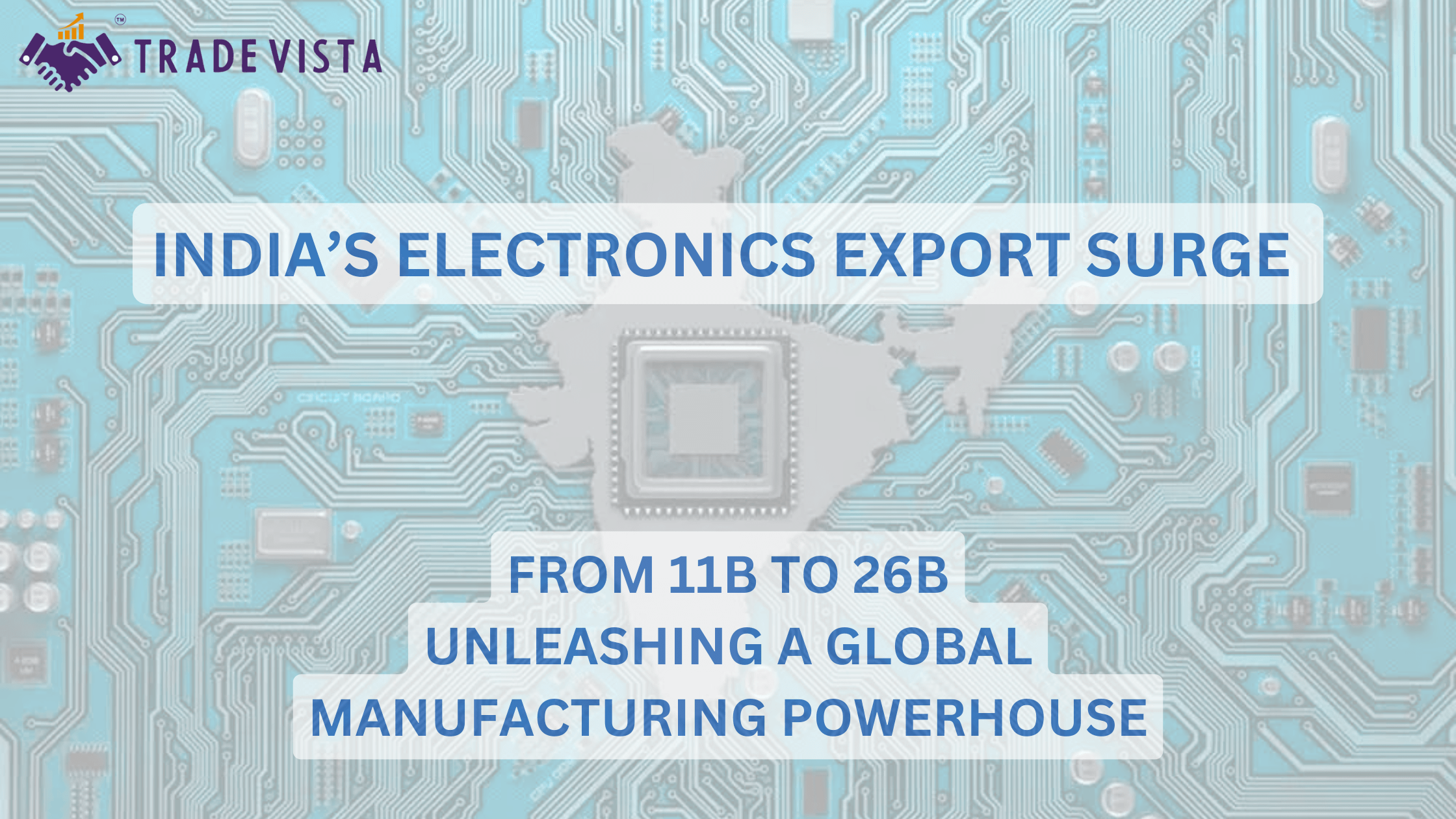The Rise of a New Global Player
India’s electronics exports in just four years have skyrocketed from 11 billion in FY21 to a projected 26 billion in FY25, marking a seismic shift in the global manufacturing landscape. This growth isn’t accidental—it results from strategic policy interventions, global supply chain realignments, and India’s bold ambition to become the world’s next electronics manufacturing hub. This surge signals a transformative opportunity for business leaders, policymakers, and investors. Let’s unpack how India is rewriting the rules of global manufacturing and what this means for the future.
The PLI Effect: Fueling India’s Manufacturing Ambitions
Policy Catalyst
The Production Linked Incentive (PLI) scheme, launched in 2020, has been the cornerstone of India’s electronics revolution. With ₹1.97 lakh crore ($26 billion) allocated across 14 sectors, the scheme ties financial incentives to incremental production and exports, creating a win-win for domestic and global manufacturers.
Key Outcomes:
Investment Boom
The PLI scheme has attracted ₹1.46 lakh crore in investments, generating ₹12.5 lakh crore in production/sales and 950,000+ jobs as of August 2024 26.
Export Surge
Electronics exports jumped 27.4% YoY (April–November 2024), reaching 22.5 billion, with smartphones alone contributing 5822.5 billion with smartphones alone contributing 5813.1 billion).
Domestic Value Addition
Mobile phone manufacturing saw local value addition rise from 8.7% (2017–19) to 22% (2020–22), reducing import dependency.
Case Study – Smartphones
Apple’s India story epitomises the PLI’s success. The tech giant assembled iPhones worth $14 billion in FY24 (14% of global production) through vendors like Foxconn and Tata Electronics, driving a 45% spike in smartphone exports.
Global Supply Chain Shifts: The “China Plus One” Advantage
Diversification Drive
Geopolitical tensions and pandemic-induced disruptions have accelerated the “China plus one” strategy. India has emerged as a prime alternative with its vast domestic market and cost-efficient labour.
Strategic Wins:
Apple’s Pivot
Apple now sources 18–20% of its iPhones from India, up from <1% in 2018, with plans to scale to 25% by 2025.
Semiconductor Momentum
The India Semiconductor Mission (ISM) has approved five units, including Kaynes Semicon’s ₹3,307 crore facility in Gujarat, totalling ₹1.52 lakh crore ($18.15 billion) in investments.
Telecom & Solar
Companies like Samsung and Jabil are exporting 4G/5G equipment and solar modules, reducing reliance on Chinese imports.
Data Snapshot – Export Growth Drivers
Sector | FY21 Exports | FY25 (Est.) | Growth (%) | Key Players |
Smartphones | $3B | $13.1B | 337% | Apple, Samsung |
Consumer Electronics | $0.5B | $2.5B | 400% | LG, Dixon Technologies |
Solar Modules | $0.3B | $1.8B | 500% | Tata Power, Waaree |
Building a Domestic Ecosystem: From Assembly to Innovation
Beyond Assembly
India is transitioning from low-value assembly to high-tech manufacturing:
Semiconductors
The ISM aims to build end-to-end chip ecosystems, with Tata Group and Micron setting up fabrication and packaging plants.
EVs & Batteries
PLI incentives for Advanced Chemistry Cell (ACC) batteries have drawn ₹18,100 crore ($2.4 billion) in commitments, positioning India as a future EV hub.
5G & IoT
Domestic production of telecom gear has cut imports by 60%, with firms like Sterlite Technologies leading 5G infrastructure exports.
Skill Development
Institutes like NAMTECH are bridging the talent gap with Industry 4.0 training programs, which are crucial for sustaining growth in robotics and AI-driven manufacturing.
Challenges and the Road Ahead
Persistent Hurdles
Infrastructure Gaps
Gujarat and Tamil Nadu outperform Bihar and Uttar Pradesh due to better logistics and power supply.
Input Costs
Soaring raw material prices have squeezed margins, with input costs rising 24.4% in 2022–23 despite output growth.
Regulatory Delays
Cumbersome licensing processes in pharmaceuticals and automotive slow project execution.
Actionable Insights
Expand PLI to SMEs
Prioritise small component makers to build resilient supply chains.
Boost Rural Manufacturing
Incentivise electronics clusters in semi-urban areas to reduce regional disparities.
Green Manufacturing
Integrate sustainability into PLI criteria to attract ESG-focused investors.
India’s electronics export boom is more than a statistical triumph—it’s a blueprint for becoming a $5 trillion economy. With the PLI scheme as its engine and global supply chain shifts as tailwinds, India is poised to dominate high-growth sectors like semiconductors, EVs, and smart devices. For investors and policymakers, the message is clear: Double down on infrastructure, skill development, and policy stability to unlock India’s full potential.
Call to Action:
- Investors: Explore partnerships in semiconductor fabrication, EV components, and telecom infrastructure.
- Policymakers: Streamline regulations and expand PLI to emerging sectors like drones and AI hardware.
- Industry Leaders: Leverage India’s cost and talent advantages to build future-ready supply chains.
The world is watching—India’s time to lead is now. Tradevista is a service provider to all manufacturers, traders, and e-commerce sellers. We help them reach out to the global market by assisting them in connecting with international buyers and also providing support services from the time they manufacture until they receive the payment of export proceeds.




